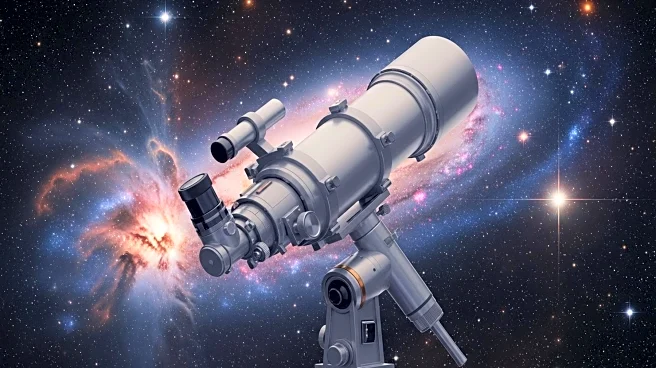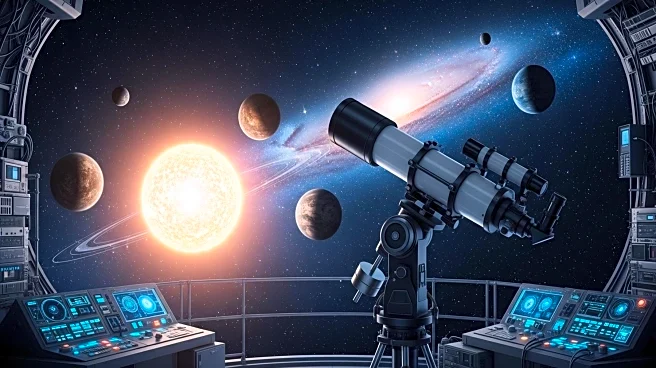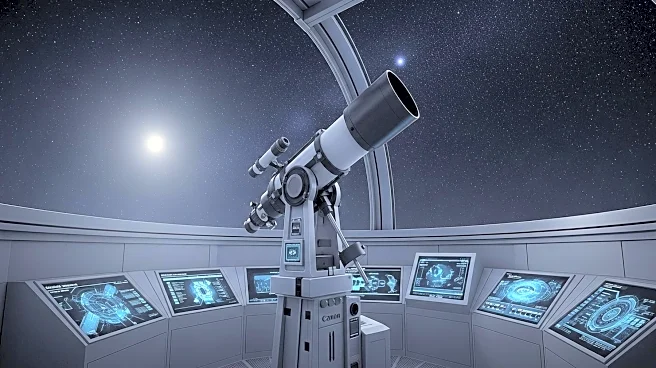What's Happening?
Recent research presented at the EPSC-DPS2025 Joint Meeting in Helsinki suggests that the nearest technological civilization in the Milky Way could be approximately 33,000 light years away. This study, conducted by Dr. Manuel Scherf and Professor Helmut Lammer from the Space Research Institute at the Austrian Academy of Sciences, highlights the challenges in discovering Earth-like planets with the necessary conditions for life, such as plate tectonics and a nitrogen-oxygen atmosphere. The researchers emphasize the rarity of extraterrestrial intelligences (ETIs) in our galaxy, noting that a civilization would need to endure for at least 280,000 years to coexist with humanity. The study also explores the role of carbon dioxide levels in sustaining life and the importance of plate tectonics in regulating atmospheric gases.
Why It's Important?
The findings underscore the difficulty of detecting extraterrestrial life and the slim chances of success for initiatives like SETI (Search for Extraterrestrial Intelligence). The study provides insights into the conditions required for advanced life to emerge, such as sufficient oxygen levels for complex animals and technological development. The research suggests that if ETIs exist, they are likely much older than humanity, given the long timescales required for technological civilizations to overlap. This has implications for our understanding of life in the universe and the potential for future discoveries in astrobiology.
What's Next?
The researchers advocate for continued efforts in the search for extraterrestrial intelligence, despite the low probability of success. They argue that ongoing searches are essential to either confirm their theory or achieve a significant scientific breakthrough by discovering ETIs. The study also calls for further exploration of factors influencing the development of intelligent life, such as the origin of life and photosynthesis, which could refine estimates of ETI prevalence.
Beyond the Headlines
The study raises ethical and philosophical questions about humanity's place in the universe and the potential implications of discovering extraterrestrial life. It challenges assumptions about the uniqueness of human civilization and encourages a broader perspective on the longevity and sustainability of technological societies.











